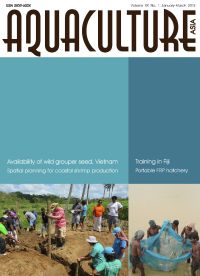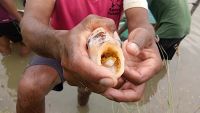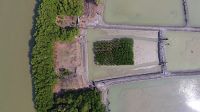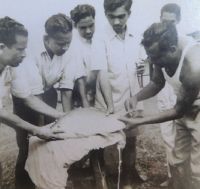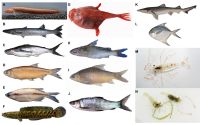Aquaculture Asia Magazine, April-June 2021
12 July 2021 | 22686 views | .pdf | 11.35 MB | Aquatic plants, Emerging Global Issues, Environment and Sustainability, Freshwater finfish, Freshwater prawns, Genetics and Biodiversity, Hatchery and nursery, India, Indonesia, Inland aquaculture, Marine finfish, Molluscs (shellfish and other), Ornamentals, Shrimp
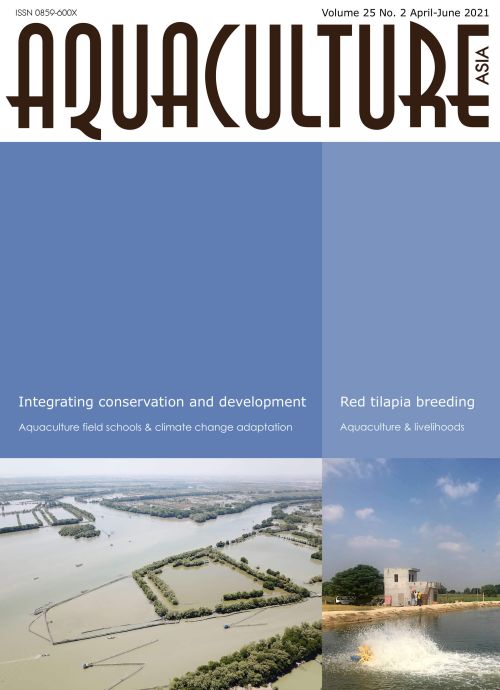
In this issue:
- Integrated taxonomy, conservation and sustainable development: Multiple facets of biodiversity
Teena Jayakumar, T.K, T.T. Ajith Kumar, Mahender Singh, Vindhya Mohindra, Rajeev K. Singh, Rajesh Dayal, J.K. Jena and Kuldeep K. Lal - A note on 100th birth anniversary of the late Dr Hiralal Chaudhuri
Subrato Ghosh - Aquaculture field schools supporting mangroves for climate change adaptation of Indonesian milkfish-shrimp farmers
Woro Yuniati, Ratna Fadillah, Sri Rejeki, Lestari Widowati, Restiana Ariyati, Apri Astra, and Roel Bosma - An insight to red tilapia breeding and culture: A farmer advisory
Somu Sunder Lingam, R., Stephen Sampath Kumar, J., Chidambaram, P., Aanand, S. Velmurugan, P. and Bhosle Rameshwar Venkatrao - Aquaculture for livelihoods and food security in North-western India
Meera D. Ansal and Asha Dhawan - NACA Newsletter
Creative Commons Attribution.
